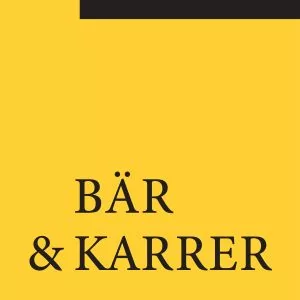1. What proportion of transactions have involved a financial sponsor as a buyer or seller in the jurisdiction over the last 24 months?
In Switzerland, the M&A market continued to cool off in the first half of 2023, with a 67 per cent decline in deal volume compared to the same period last year. Private sponsors involvement has decreased, representing only 29 per cent of all transactions in H1. This decline was predominantly due to the macroeconomic headwinds, higher interest rates, instability in banking and financing markets, fears of a recession and uncertainty in energy prices as well as the ongoing war in Europe. According to a study by Deloitte, the number of deals acquiring Swiss firms was one of the lowest since it started recording this data. The transaction volume suffered a sharp fall in inbound transactions (-54% vs H1 2022) while outbound transactions hit a record 109 M&A transactions in the first half of 2023 (+18% vs H1 2022). Outbound transactions remain driven by the strong Swiss franc. Moreover, given various financial sponsors postponed exits of their portfolio companies in 2023. We are fairly optimistic, regarding M&A activity in 2024.
2. What are the main differences in M&A transaction terms between acquiring a business from a trade seller and financial sponsor backed company in your jurisdiction?
The key difference we see is that financial sponsors are often more reluctant to give representations and warranties or indemnities than trade sellers. The two main reasons for this difference are, in our view, the following: First, financial sponsors aim to have a clean exit with limited (potential) outstanding liabilities in order to be able to distribute the exit proceeds to the investors. Second, financial sponsors are, by trend, less involved in the day-to-day business of the target group and, therefore, not in the same position as trade sellers to assess potential risks.
3. On an acquisition of shares, what is the process for effecting the transfer of the shares and are transfer taxes payable?
To transfer the shares of a (private) Swiss company limited by shares, a share purchase agreement between seller and buyer setting out the obligations to sell and purchase as well as further contractual terms of the transfer is required. In order to effect the transfer of the ownership in such shares at the closing of the share purchase agreement, the following additional steps are required: In case no physical shares or share certificates are issued, a written assignment agreement between seller and buyer as well as a board resolution approving the transfer (if articles of association contain a transfer restriction regarding the registered shares) is required. In case physical shares or share certificates are issued, it is required that seller delivers to buyer such shares or share certificates, duly endorsed to buyer, together with a board resolution approving the transfer (in case of a transfer restriction). Securities transfer tax is payable on the sale of (Swiss or foreign) shares if a Swiss securities dealer is party to the agreement or is involved as intermediary and amounts to up to 0.15% for Swiss shares and 0.3% for foreign shares (if no exemption applies).
4. How do financial sponsors provide comfort to sellers where the purchasing entity is a special purpose vehicle?
As transaction certainty is key for sellers, financial sponsors often are required to provide sellers with a sufficient proof of funds. This is normally done with an equity and/or debt commitment letter for (at least part of) the purchase price in cases where the purchasing entity is a special purpose vehicle. Under the equity commitment letters, sellers are usually only entitled to claim payment to the special purpose vehicle (and not directly to them). In the context of public transactions, the availability of funds must be confirmed by the review body before launch of the offering.
5. How prevalent is the use of locked box pricing mechanisms in your jurisdiction and in what circumstances are these ordinarily seen?
Contrary to the USA and Asia, locked box pricing mechanisms are widely used in Switzerland. In particular in a strong sellers' market, sellers seeking to limit balance sheet risks and reduce the risk of post-closing purchase price adjustment disputes will push towards using locked box pricing mechanisms. This trend in of the las years continued in 2023 despite the more changing environment for sellers. Locked box pricing mechanisms are often combined with an interest payment or cash flow participation, respectively, since the locked box date allowing sellers to participate in the cash flow generated in the period between the locked box date and actual payment of the purchase price (i.e. consummation of the transaction) and buyers tend to accept longer periods between the locked box accounts and closing. Conversely, deferred purchase price elements (such as earn-out) or vendor loans have been seen less often in recent deals.
6. What are the typical methods and constructs of how risk is allocated between a buyer and seller?
The typical methods and constructs for the risk allocations are representations and warranties for general (unidentified) risks as well as indemnities for specific risks identified during due diligence (such as a pending litigation). In the last years, we have seen a shift from indemnities to so called "quasi indemnities", i.e. representations and warranties which are excluded from disclosure, but which are still subject to the other limitations such as the notification obligation, de minimis, threshold/deductible, damage definition etc. In addition, risks can be allocated through the purchase price mechanism as well as certain covenants.
7. How prevalent is the use of W&I insurance in your transactions?
Over the past years, W&I insurance has increasingly been used in M&A deals in Switzerland. In the sellers' market that continued in 2023, we mainly see buyer policies which can be a solution to bridge the "liability gap" where a seller is prepared to give representations and warranties but wants to cap its liability at a level that the buyer is not comfortable with. In such cases, a W&I insurance policy can increase the overall cover to a level that is acceptable to the buyer. In case the liability cannot be capped or excluded due to the lack of negotiation power of seller, seller policies are used (especially by financial sponsors) to shift the risk of potential outstanding claims to an insurer in order to be able to distribute the exit proceeds to the greatest extent possible to investors immediately following closing.
8. How active have financial sponsors been in acquiring publicly listed companies?
Given the lower stock markets, there was a high interest of financial sponsors in P2P transactions. However, only few have actually materialised. Recent examples of private equity activities in publicly listed companies will be the acquisition of Schaffner Holding AG by Tyco Electronics, Teck Resources Limited by Gelncore AG, and the acquisition of Credit Suisse AG by UBS AG totalling to a deal volume of USB 21 billion.
In the field of public M&A, private equity clients appear more frequently as possible bidders in take-private transactions. Further trends include shareholder activists, who continue to engage more broadly in Swiss targets. The recent corporate law reform in effect since 1 January 2023 could further support this trend into 2024, as it lowered the thresholds for shareholders of listed companies to bring forward agenda items and proposals at shareholder meetings.
9. Outside of anti-trust and heavily regulated sectors, are there any foreign investment controls or other governmental consents which are typically required to be made by financial sponsors?
Switzerland adopts a relatively liberal stance towards foreign investment and financial sponsors, treating them on par with domestic investors in most cases. However, investments in certain regulated industries, such as banking or insurance, are subject to specific government approvals or licenses. Notably, there are restrictions under Swiss law for foreign investors looking to acquire non-commercial real estate, such as residential properties, state-used buildings, undeveloped land, or properties that are permanently vacant. Later is governed by the Lex Koller regulations, which mandate that foreign investors obtain special permits for such acquisitions. The Lex Koller restrictions further extend to companies incorporated in Switzerland that are ultimately controlled by non-Swiss citizens.
The journey toward creating a foreign direct investment (FDI) framework in Switzerland continues to face challenges. The draft bill, which was released in May 2022 to introduce a screening mechanism for foreign investments, did not gain approval and is currently undergoing a complete revision. Consequently, the exact timeline for the introduction of this new legislation is currently unclear, as it is subject to the lengthy legislation process.
10. How is the risk of merger clearance normally dealt with where a financial sponsor is the acquirer?
Sellers usually conduct their own merger control assessment with respect to the different bidders. The outcome of such assessment and its impact on the timing of the transaction and transaction certainty may be an important criterion to move forward with a specific bidder. In the current sellers' market, we often see "hell or high water"-clauses included in the merger clearance closing condition.
11. Have you seen an increase in (A) the number of minority investments undertaken by financial sponsors and are they typically structured as equity investments with certain minority protections or as debt-like investments with rights to participate in the equity upside; and (B) 'continuation fund' transactions where a financial sponsor divests one or more portfolio companies to funds managed by the same sponsor?
Financial sponsors active in Switzerland follow a wide range of strategies, including non-control deals. Typically, financial sponsors taking non-control positions seek protection via shareholders' agreements, which usually restrict the transferability of the shares and include board appointment rights as well as provisions regarding voting undertakings for certain or even all board or shareholders' resolutions. In this respect, Swiss law provides great flexibility and Swiss market practice has, in recent years, reached a high level of sophistication. A key question for financial sponsors is the exit mechanism, which may be more difficult to structure in case of a non-control deal.
12. How are management incentive schemes typically structured?
Management incentive schemes are an important part of transactions involving a financial sponsor. Broadly speaking, management inventive schemes can be structured either as "strip investments" or as "sweet equity". In case of a strip investment, managers invest at the same terms and conditions as the financial sponsor. In case of sweet equity, managers normally receive a certain discount and/or other different share classes (e.g. managers receive only/mostly ordinary shares while the financial sponsor receives a mix of ordinary shares and preferred shares with a fixed interest, which results in a certain envy ratio in favor of the managers). However, Swiss tax law sets rather narrow limits with respect to tax exempt capital gains on sweet equity. Managers are usually asked to finance a substantial part of their investment with equity (roughly 50% or more) in order to have "skin in the game" and to fully align the managers' with the financial sponsor's interest. Sometimes financial sponsors are willing to grant loans to managers in a certain amount; however, due to tax reasons, such loans need to be granted at arm's length terms and full recourse. Management usually invests directly in the acquiring entity (AquiCo) but managers can also be pooled in a management pooling vehicle (due to tax reasons, such pooling vehicle should generally be "look through", see question no. 13 below). Often, one single shareholders' agreement between the financial investor and management or pooling vehicle is concluded, which governs all aspects of the investment (governance, exit procedures, shares transfers, vesting conditions, good/bad leaver provisions etc.). Usually, managers have very limited governance rights but are obliged to vote as instructed by the financial sponsor or the financial sponsor is the controlling partner of the pooling vehicle. New managers will have to accede to the shareholders' agreement if entering the scheme at a later point.
13. Are there any specific tax rules which commonly feature in the structuring of management's incentive schemes?
Taxes can be triggered upon entry or exit of the managers. Generally, managers will invest at fair market terms based on the purchase price of the financial sponsor and should not suffer a tax at entry. Certain discounts for blocking periods are accepted under Swiss tax law. The decisive question is whether the participation qualifies as "ordinary" investment (which should be the case of a strip investment) or as coinvestment or entails salary components. Capital gains on privately held shares are generally tax exempt for Swiss resident shareholders. For management participations, however, the qualification as coinvestment would result in the full difference between exit price and acquisition costs being treated as taxable salary (also subject to social security charges on employer level) or the application of a so-called formula value which applies at entry and exit, resulting in the excess of the exit price above the application of the formula upon exit being taxable salary (depending on the canton only during a five year or unlimited period). Generally, a tax ruling should be obtained prior to the investment regarding the treatment and potential tax consequences.
14. Are senior managers subject to noncompetes and if so what is the general duration?
Senior managers are often subject to non-compete undertakings in Switzerland. The duration depends on whether the manager is at the same time invested in the group (e.g. through a management incentive scheme) and, if so, has the rights and obligations as shareholder. If, for example, a manager has various information and governance rights as well as the possibility to exit its investment after a certain period of time, a non-compete undertaking may be justified even after such manager ceases to be an employee of the company. Generally, non-competes may not exceed three years following the end of the employment relationship or the investment and need to be limited geographically and with respect to the scope. Further, courts in Switzerland have wide discretion when it comes to enforceability of noncompetes.
15. How does a financial sponsor typically ensure it has control over material business decisions made by the portfolio company and what are the typical documents used to regulate the governance of the portfolio company?
Swiss law provides for key management duties, such as overall management of the company, determination of the company's organization, appointment and dismissal of the management, which duties fall into the sole competence of a company's board of directors and cannot otherwise be delegated. Depending on the financial sponsor's strategy, the sponsor can keep the existing board of directors as a whole or just to some extent while additionally electing its own members. Alternatively, it can replace the board in its entirety. Generally, however, a financial sponsor keeps (some or all of) the already existing board members of the portfolio company and elects own board members, including the chairman of the board of directors, as the latter has the casting vote (unless excluded in the articles of association). By means of such additional elections, a financial sponsor ensures its control over material business decisions.
When the company's business management is delegated to individual board members or senior management, the company has to issue organizational rules. Typically, the organizational regulations set out rules for managements' duties and reporting obligations, and form part of the common documents that regulate the company's governance. Additionally, important governance matters can be included in the articles of association, which are, however, accessible to the public.
Where a portfolio is not fully owned by the same financial sponsor, governance matters, including veto rights for the benefit of minority shareholders, are included in the shareholders' agreement.
16. Is it common to use management pooling vehicles where there are a large number of employee shareholders?
We regularly see structures where management will invest in the structure via a pooling entity which will itself be a direct shareholder of the target investment company. The advantage is that such a structure is administratively less burdensome and cleaner where multiple managers participate in the program. However, the structure will ultimately be driven by tax considerations. In this regard it may be required that Swiss resident managers directly invest at the same level as the private equity investor in order to have the possibility to benefit from a tax free capital gain.
17. What are the most commonly used debt finance capital structures across small, medium and large financings?
In large Swiss debt financings senior-term loan(s) to finance the acquisition and revolving credit facilities to finance the target's working capital are the most common structures. Such term and revolving facilities are frequently provided by a syndicate of Swiss and foreign banks. A syndication including Swiss banks only would be more typical for mid-sized financing. Depending on the targeted leverage, larger capital financings are often supplemented by mezzanine loans and less frequently by second lien loans and payment-inkind (PIK) financings. Even though the issuance of notes is mostly arranged through the London market and, thus, rarely governed by Swiss law, we have in the past accompanied larger Swiss acquisition financings where secured bonds were placed in the Swiss market. Smaller debt financings in Switzerland may often be limited to one or two senior term loans granted on a bilateral basis.
18. Is financial assistance legislation applicable to debt financing arrangements? If so, how is that normally dealt with?
Financial assistance granted in the form of guarantees or collateral to secure obligations of direct or indirect shareholders (up-stream) or sister companies (crossstream) are subject to restrictions under Swiss corporate and tax laws. Up-stream or cross-stream of guarantees or collateral should generally be granted at arm's-length terms from a Swiss corporate law perspective. If not at arm's length terms, such guarantees or collateral may qualify as a constructive dividend or, if no sufficient freely distributable reserves are available, as prohibited repayment of share capital resulting in the risk of liability for members of the board of directors, nullity of the guarantee or collateral and possible negative withholding tax implications. Since there are no clear-cut rules or guidance as to what conditions will be considered as arm's-length terms, the following cautionary measures are taken as a matter of standard practice whenever a Swiss company provides an up- or cross-stream guarantee or security: The guarantor's or security provider's articles of association must explicitly permit the granting of up- and cross-stream guarantees or collateral with or without consideration; any up- or cross-stream guarantee or collateral must be unanimously approved by the shareholder(s) and the members of the board of directors (or managing officers) of the guarantor or security provider; and up- or crossstream guarantees or collateral should be granted only subject to market standard limitation language limiting the enforcement of such guarantee or collateral to the amount of freely distributable reserves of the guarantor or security provider.
19. For a typical financing, is there a standard form of credit agreement used which is then negotiated and typically how material is the level of negotiation?
Credit agreements covering larger financing transactions with a volume exceeding CHF 50 million are often based on standard forms prepared by the Loan Market Association with a Swiss finish. Depending on the purpose and structure of the financing, the level of negotiation remains material. Smaller transactions are often covered by short and straightforward loan agreements that are based on standard forms used by the respective lenders, which often leave limited room for negotiations.
20. What have been the key areas of negotiation between borrowers and lenders in the last two years?
The key areas of negotiation are, similar as in other jurisdictions, financial covenants, certain fund mechanisms, clean-up concept, prepayment provisions, security package, debt push down and flexibility in terms of future facility increases. From a Swiss tax law perspective, substantive negotiations take place around provisions to mitigate withholding tax risks which may result in the restriction of transfers to new lenders, the limitation of the use of proceeds in Switzerland or an obligation to obtain tax rulings.
21. Have you seen an increase or use of private equity credit funds as sources of debt capital?
In Switzerland, there are some private equity funds that are involved in the debt capital market. However, there is (yet) no reliable data on the private debt market. Studies estimate that the volume of the private debt market in Switzerland is at around CHF 3 billion (approx. 0.4-0.6% of the global private debt fund market). Despite the growing private debt market in Switzerland it is still considered a niche market compared to banks' lending volumes or public debt capital markets.
Originally published by The Legal 500.
The content of this article is intended to provide a general guide to the subject matter. Specialist advice should be sought about your specific circumstances.



